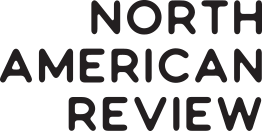Elements of Creative Writing OER textbook

This free and open access textbook introduces new writers to some basic elements of the craft of creative writing. The authors—Rachel Morgan, Jeremy Schraffenberger, and Grant Tracey—are editors of the North American Review, the oldest and one of the most well-regarded literary magazines in the United States. We’ve selected nearly all of our readings and examples from writing that has appeared in our pages over the years. Because we had a hand in publishing these pieces originally, our perspective as editors permeates this book. As such, we hope that even seasoned writers might gain insight into the aesthetics of our magazine as we analyze and discuss some reasons we think this work is so remarkable—and therefore teachable.
The primary audience for this textbook, however, is the new writer, someone who may be enrolled in an introductory class, or perhaps someone who is trying to learn about the craft of creative writing on their own. No matter what brought the writer to this resource, we attempt to break things down to demonstrate principles of what we think makes good writing. We discuss the three genres that we publish in the NAR, each part written by the corresponding editor of that genre: Rachel Morgan covers poetry; Jeremy Schraffenberger covers creative nonfiction; and Grant Tracey covers fiction. Because each of these parts is written by a single person, we’ve decided to retain the individual voices of each author. You will gain a sense of each editor through their approach to discussing their genre. You will hear the writers and mentors who have influenced them. There will also be some overlap in our discussions of certain elements. All three of us, for instance, discuss imagery at certain points. You’ll encounter different discussions of metaphor and other kinds of figurative language. In some cases, lessons in the context of one genre will be equally applicable to other genres. You might even find places in this book where there is some disagreement among its three authors or slightly different ways of thinking about a specific element. As a new writer, you should know that there are no absolutes when it comes to making art. We think we have some important and revealing information to help you become a better writer, but it’s vitally important that you hear a multiplicity of voices, understanding that eventually you will need to make up your own mind about what makes good writing. In the end, our goal is not to convince you that we have all the right answers. Rather, our goal is to help you become a writer who is confident enough to make bold and informed decisions in your own work. As teachers, ultimately our job is to make ourselves unnecessary.
This textbook is designed to be used in a multi-genre creative writing class, but you can take or leave whatever parts you like. There is very little in the way of sequencing, so you can sample individual sections, chapters, or exercises as you find most useful. Because the book is an Open Educational Resource (OER), your teacher might also mix and match, adapt, truncate, or otherwise revise for their own purposes. You might also simply dip into some readings as an anthology of outstanding contemporary creative writing. We anticipate updating this textbook periodically with new work from the North American Review. We would love to hear about your experiences with this textbook (nar@uni.edu), as a student or a teacher, so that we might make improvements in future editions. Our hope is that the following chapters will offer some helpful ideas as you hone your craft as a creative writer.



